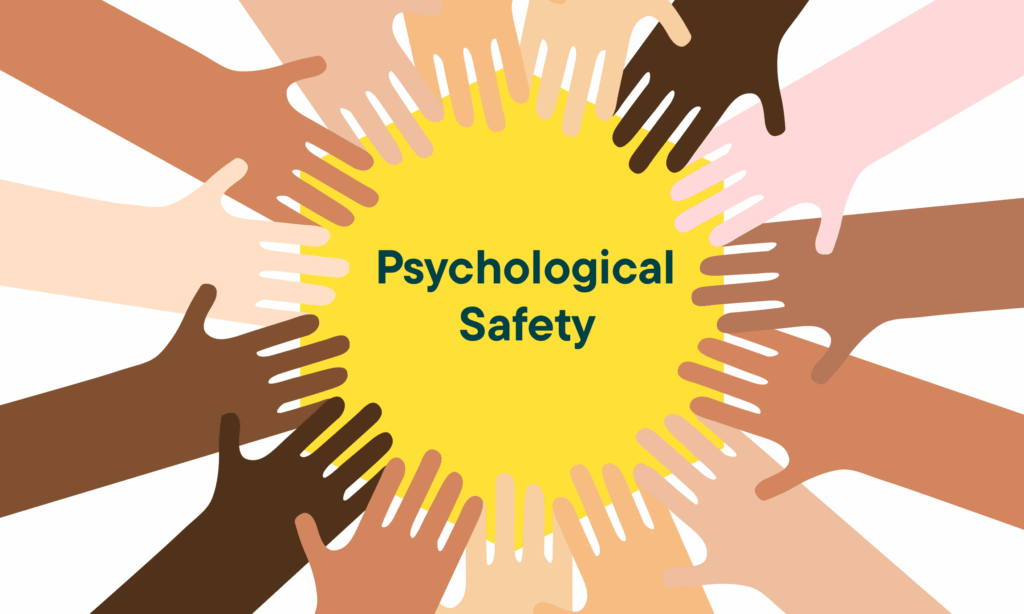When a team lacks trust or psychological safety, performance suffers. People hold back ideas, avoid risk, and hesitate to speak honestly. To build trust and psychological safety, teams must create a climate where openness, reliability, and respect are the norm.
Improving this area begins with recognizing the gap. Teams must explore what’s driving the discomfort. A good place to start is interpersonal dynamics, how individuals relate to one another. These relationships form the foundation for strong team culture and trust.

Follow through to build trust and psychological safety
Trust starts with doing what you say you will do. When team members consistently follow through on their commitments, they build reliability and credibility. This also includes trust in each other’s expertise and ability to deliver. Without that base level of confidence, collaboration and risk-taking suffer.
Encourage risk-taking and honesty
To build trust and psychological safety, leaders must encourage thoughtful risk-taking. People will only speak up, challenge an idea, or admit a mistake when they know it won’t be used against them. Leaders can model this by showing vulnerability, inviting dissent, and responding constructively.
Support authenticity and belonging
When people feel they can show up as themselves, psychological safety grows. But authenticity depends on team culture. One consistently negative or hostile teammate can cause others to shut down. Supporting authenticity means actively fostering a team environment where people feel accepted, respected, and included.
Use structured sharing to build connection
Connection builds trust. One proven way to build trust and psychological safety is by helping team members get to know each other in a deeper way. Structured team-sharing exercises, such as career highlights and personal “superpowers”, open the door to vulnerability and mutual appreciation.
Ask better questions to strengthen relationships
Team members treat each other better when they understand each other. Set aside time for meaningful conversations. Use questions like “Why did you join the company?” or “What’s been your biggest learning here so far?” These discussions make it easier to work through tension when it arises.
Normalize appreciation and recognition
Research suggests that five positive interactions are needed to balance out one negative one. Yet many teams underuse appreciation. Recognizing each other’s contributions, out loud and regularly, is one of the simplest and most effective ways to build trust and psychological safety.
Want a Fast Way to Improve Executive Team Effectiveness?
Executive team effectiveness is not just about individual talent. It’s about how the team operates when stakes are high and time is tight. If you’re looking for a fast, focused way to understand how your team is really doing, reach out about our Team Effectiveness Profile (TEP). It’s a simple tool that gives you immediate insight into what’s working, what’s not, and where to focus next.
If your executive team is aiming to reach the next level of performance, we can help. At KSE Leadership, we work with senior teams to strengthen trust, sharpen execution, and improve how leaders work together. Whether you’re navigating change or preparing for growth, we’ll help you build the habits that drive lasting executive team effectiveness.


Comments are closed for this article!